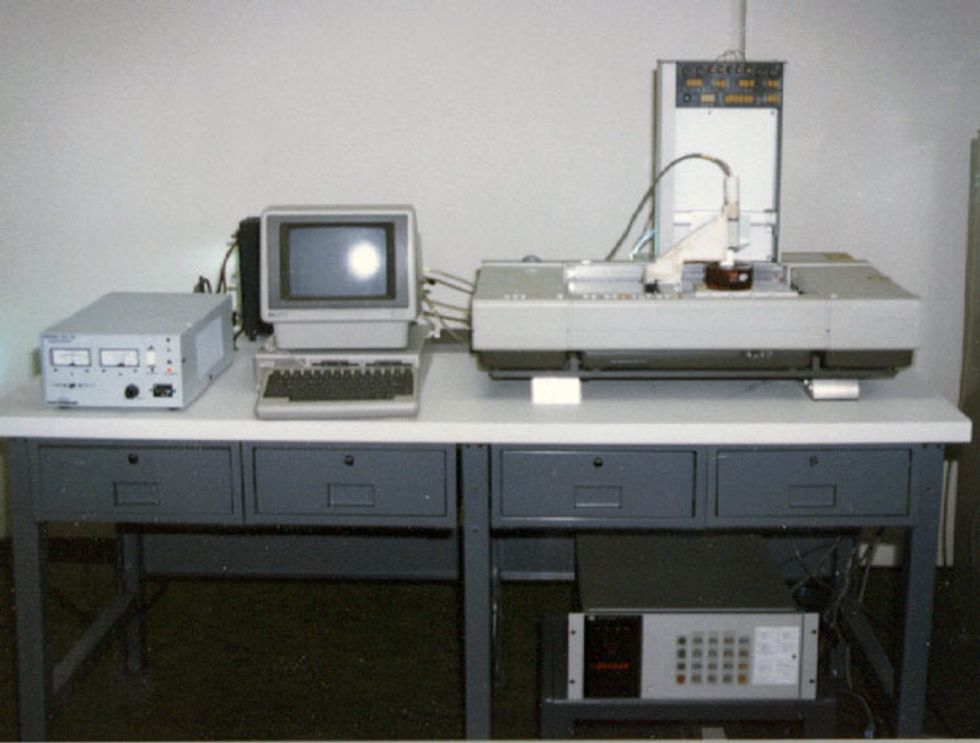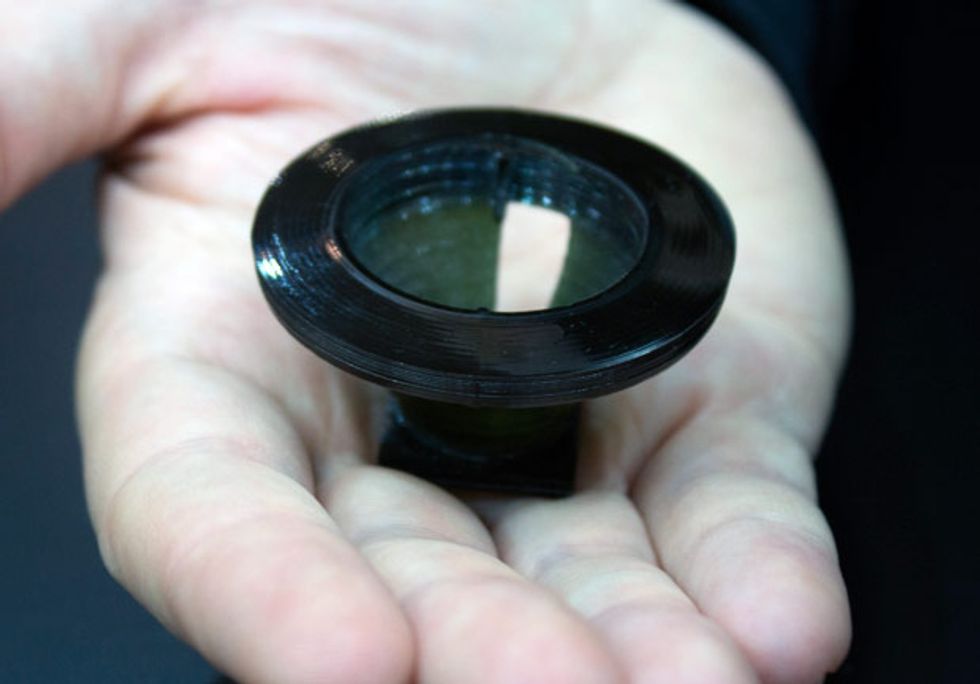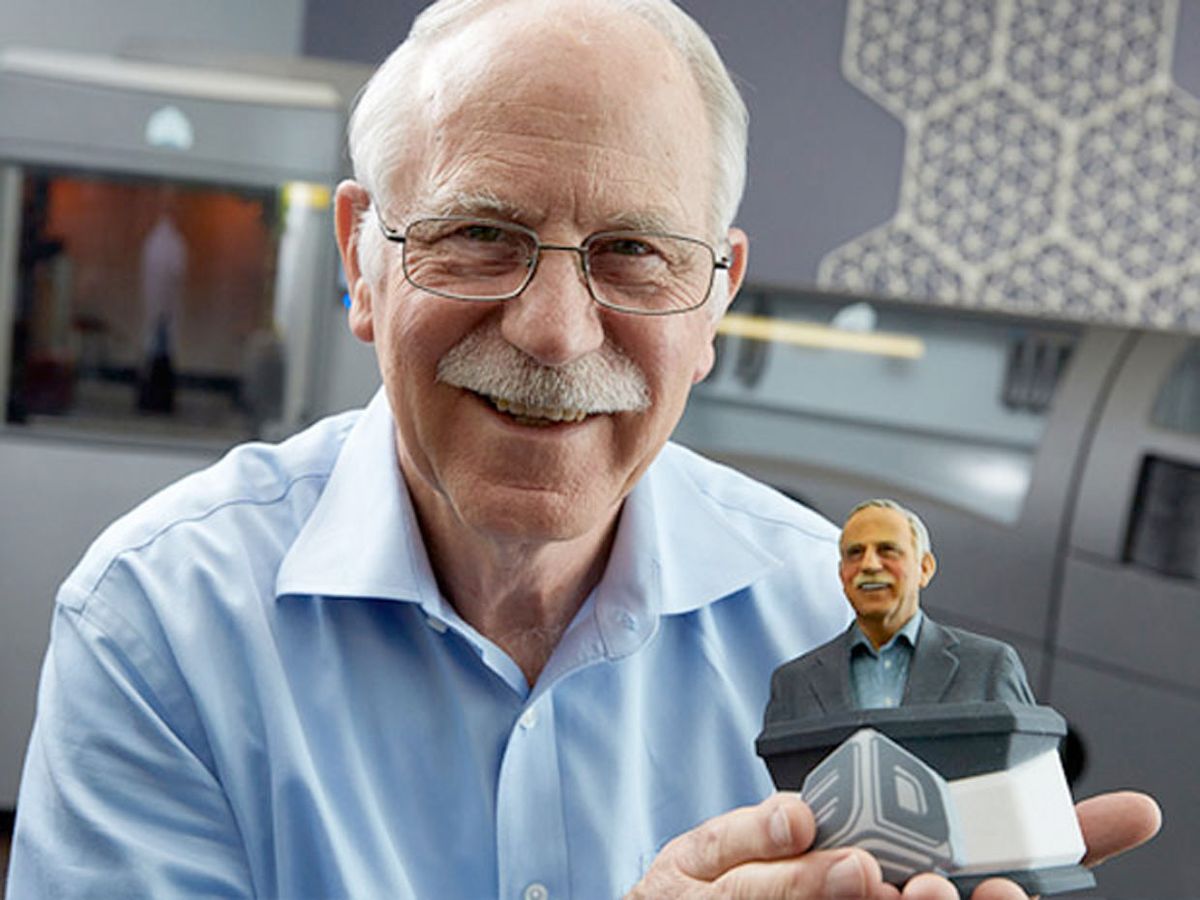THE INSTITUTENearly three decades ago, long before machine parts, jewelry, toys, and even artificial organs were being created with 3-D printers, IEEE Member Charles Hull printed a small cup using ultraviolet light and a vat of plastic goop using a process he invented called stereolithography.
The technique involves curing and bonding a liquid photopolymer with ultraviolet (UV) light, then building 3-D structures layer by layer as the plastic hardens. Stereolithography is still used by many of today’s industrial 3-D printers, but the devices are no longer found only in factories. Over the last three decades, these printers have gotten smaller and more affordable. Now, 3-D printers can be found in laboratories, small businesses, and even people’s homes.
THE START OF SOMETHING BIG

In 1983, Hull was working for a company that used ultraviolet lamps to add a layer of hard plastic onto surfaces such as tables and countertops. When he proposed a new way to use the UV light—to turn parts created with a computer-aided design (CAD) software into 3-D objects—he was given permission to tinker in the company’s laboratory in the evenings and on weekends.
Hull experimented with the photopolymers, which are liquid acrylic-based materials that harden when exposed to UV light. He built a machine [see photo above] that used a UV laser to etch plastic layers into different shapes and stacked these layers to form an object. But writing the code to tell the printer how to etch each layer was time consuming, and as a result, he stuck to simple shapes. The first object he printed, a cup about 5 centimeters tall, took months to produce.
Hull continued to make improvements to the machine and by the mid-1980s, the 3-D printer was ready to print larger and more complex objects such as prototypes of machine parts. It attracted the attention of car manufacturers. They wanted a way to create their own prototypes of parts such as door handles and stick-shift knobs rather than wasting time and money sending blueprints to tool-and-die shops.
To further his efforts, Hull founded 3D Systems, in Valencia, Calif., in 1986, where he is now executive vice president and chief technology officer. His first 3-D printer, which sold for about US $100,000, hit the market in 1988. It was snapped up by airplane and medical equipment manufacturers and was adopted by several carmakers, including General Motors and Mercedes Benz.
Besides selling printers, the company also developed software for rapid prototyping and computer-aided manufacturing. Designers use this software to create standard tessellation language (STL) files, a format Hull invented that converts CAD files into directions that printers can read to produce 3-D objects. In honor of his pioneering contributions, Hull was recently inducted into the U.S. National Inventors Hall of Fame, in Alexandria, Va.
Although Hull’s invention was originally used only by industry, others built desktop 3-D printers that are affordable, easier to build, and able to produce a wide variety of items.
FROM THE FACTORY TO THE HOME

In the mid-1990s, Stratasys, a 3-D printing company in Rehovot, Israel, developed a 3-D printer that used a process called fused deposition modeling. In FDM, plastic is melted and deposited layer by layer through a heated nozzle
This process is used by several of today’s smaller desktop 3-D printers like the ones from MakerBot, a company owned by Stratasys, in New York City, that develops 3-D printing kits for hobbyists.
In 2005, Adrian Bowyer, a mechanical engineering professor at the University of Bath, in England, founded RepRap, an open-source project to develop a 3-D printer that could print most of its own components and be easily built for only a few hundred dollars. In February 2008 RepRap launched Darwin 1.0, a printer that could produce half of its components. By September, nearly 100 copies were produced worldwide.
Hull said in a June interview with The Guardian that when he was tinkering in the lab three decades ago, he could not have predicted the array of things that would be made with a 3-D printer. A drop in their cost in the early 2000s led to a rise in availability of these units, and their applications now seem endless. Jewelry and toys are just the beginning—the printers are also being used to make robots, cars, and even gourmet desserts that require precise layers of icing or chocolate. Hull is most impressed with 3-D printing’s myriad medical applications, especially its application to custom prosthetics. Scientists in Australia and the United States are now working toward printing artificial organs such as kidneys.
According to Hull, 3-D printing fulfills a pent-up need among creative people in a digital age. “Nowadays, everything is on a screen, and we‘ve kind of missed the tangible result. This is a means to convert something in the computer to reality in a straightforward way.”



